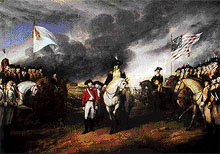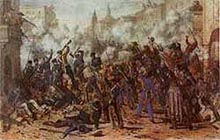...........The apparatus that was to eventually allow space travel was one not suspected by science until the turn of the twentieth century; it was however, in development for centuries before it would be used to that end. The first known use of rockets in European history was in the battle of Liegnitz in 1241 AD, where they were probably used as incendiary weapon (Emme, 66). These fire arrows were no doubt crude devices, which had little utility as a weapon for an epic period due to their inferiority to other conventional weapons such as cannons and guns. The rocket did have some advantages; with its lack of recoil and simpler design, it was given some attention by resourceful military designers. Around the year 1420 a sketchbook was compiled by the Italian military engineer Joanes DeFontana which outlined several military rockets that came into limited use; and later, in 1650, a historically significant publication by Kosmierz Siemienowicz contained hundreds of illustrations and ideas for different types of rockets. This volume titled Artis Magne Artilleris was influential on future innovations due to its wide circulation (Emme, 67). Years after that, Newtons theories of gravity and inertia would provide the first scientific basis for the properties of rockets; but their practical use would remain limited for greater than a century to follow. |
|

